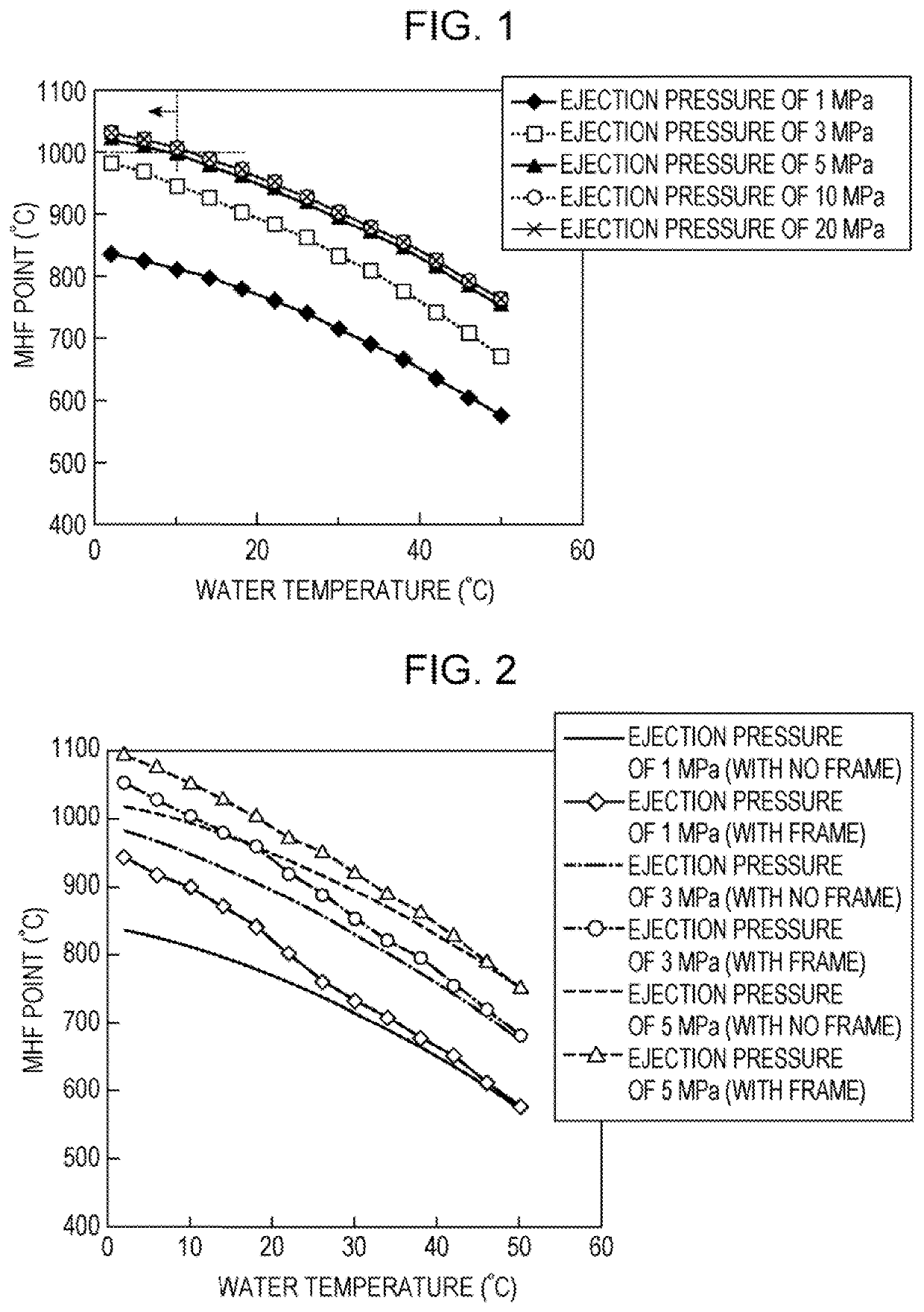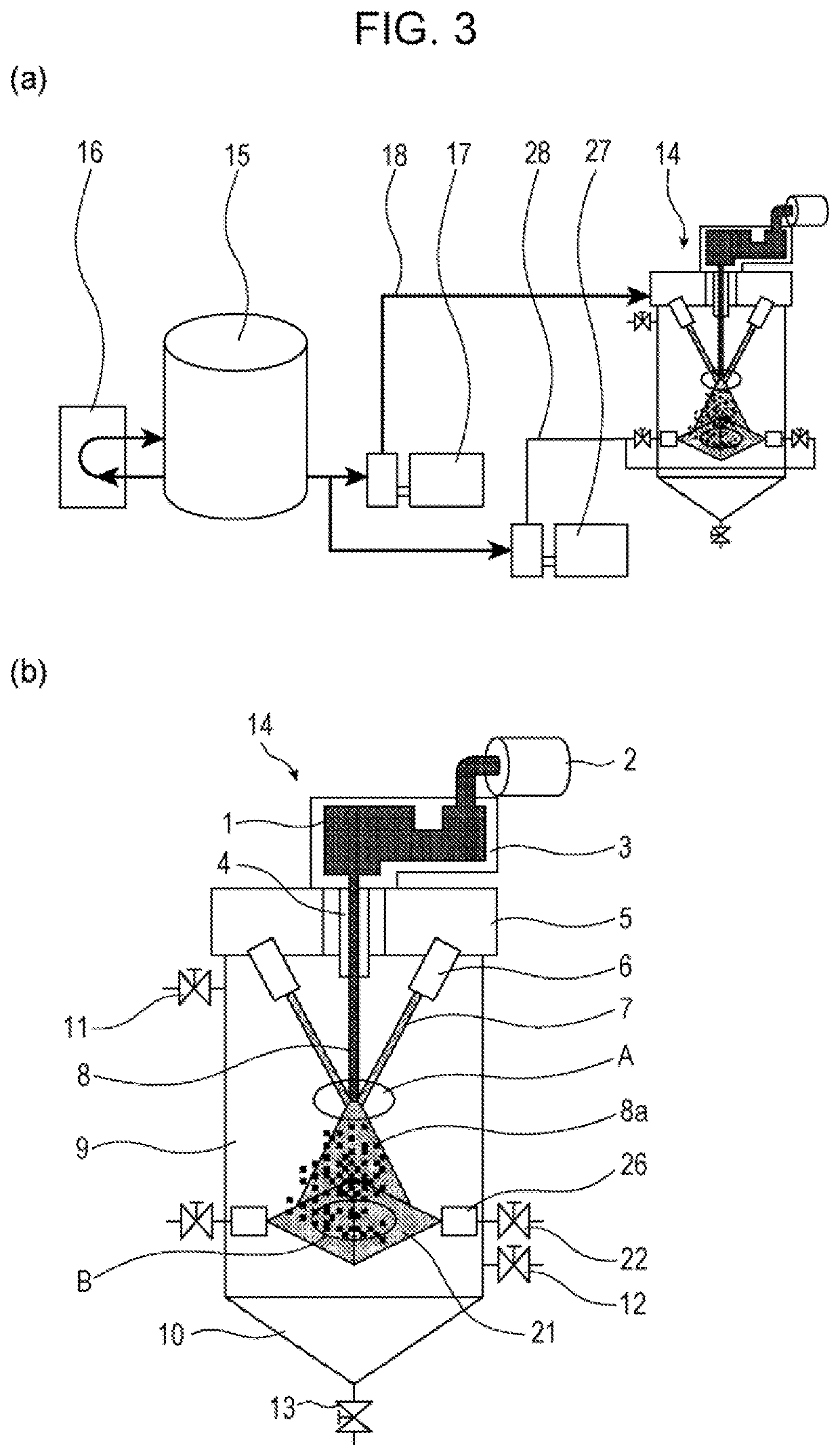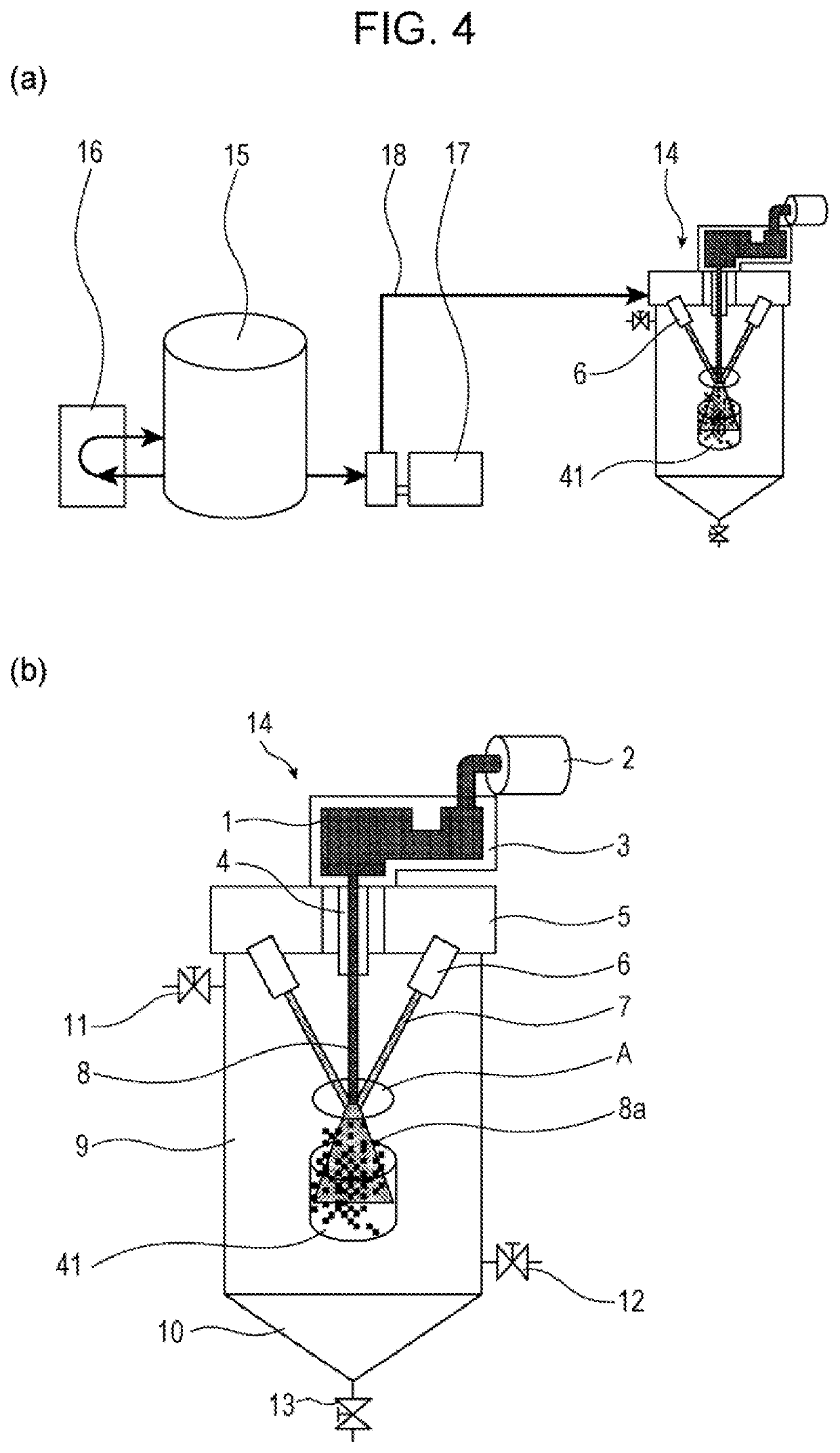Method for producing water-atomized metal powder
a technology of metal powder and water atomization, which is applied in the direction of magnetic materials, magnetic bodies, electrical equipment, etc., can solve the problems of difficult contact between the surface of molten metal and the cooling water, preventing the promotion of cooling, and film boiling is likely to occur, etc., to achieve rapid cooling, simple method, and easy production
- Summary
- Abstract
- Description
- Claims
- Application Information
AI Technical Summary
Benefits of technology
Problems solved by technology
Method used
Image
Examples
example 1
[0079]Each metal powder was produced using a water-atomized metal powder production apparatus shown in FIG. 3.
[0080]Raw materials were blended (partly containing impurities is inevitable) such that an Fe—B alloy (Fe83B17) with a composition of 83% Fe-17% B and an Fe—Si—B alloy (Fe79Si10B11) with a composition of 79% Fe-10% Si-11% B on an atomic basis were obtained, followed by melting the raw materials at about 1,550° C. in a melting furnace 2, whereby about 50 kgf of each molten metal was obtained. The obtained molten metal 1 was slowly cooled to 1,350° C. in the melting furnace 2 and was then poured into a tundish 3. An inert gas valve 11 was opened in advance such that a chamber 9 had a nitrogen gas atmosphere. Before the molten metal was poured into the tundish 3, cooling water was supplied to a nozzle header 5 from a cooling water tank 15 (a volume of 10 m3) by operating a high-pressure pump 17, whereby jet water (fluid) 7 was ejected from water ejection nozzles 6. Furthermore,...
example 2
[0088]Each metal powder was produced using a water-atomized metal powder production apparatus shown in FIG. 4.
[0089]Raw materials were blended (partly containing impurities is inevitable) such that an Fe—B alloy (Fe83B17) with a composition of 83% Fe-17% B and an Fe—Si—B alloy (Fe79Si10B11) with a composition of 79% Fe-10% Si-11% B on an atomic basis were obtained, followed by melting the raw materials at about 1,550° C. in a melting furnace 2, whereby about 50 kgf of each molten metal was obtained. The obtained molten metal 1 was slowly cooled to 1,350° C. in the melting furnace 2 and was then poured into a tundish 3. An inert gas valve 11 was opened in advance such that a chamber 9 had a nitrogen gas atmosphere. Before the molten metal was poured into the tundish 3, cooling water was supplied to a nozzle header 5 from a cooling water tank 15 (a volume of 10 m3) by operating a high-pressure pump 17, whereby jet water (fluid) 7 was ejected from water ejection nozzles 6. A container ...
example 3
[0099]Each metal powder was produced using a water-atomized metal powder production apparatus shown in FIG. 5.
[0100]Raw materials were blended (partly containing impurities is inevitable) such that an Fe—B alloy (Fe83B17) with a composition of 83% Fe-17% B and an Fe—Si—B alloy (Fe79Si10B11) with a composition of 79% Fe-10% Si-11% B on an atomic basis were obtained, followed by melting the raw materials at about 1,550° C. in a melting furnace 2, whereby about 50 kgf of each molten metal was obtained. The obtained molten metal 1 was slowly cooled to 1,350° C. in the melting furnace 2 and was then poured into a tundish 3. An inert gas valve 11 was opened in advance such that a chamber 9 had a nitrogen gas atmosphere. Before the molten metal was poured into the tundish 3, cooling water was supplied to a nozzle header 5 from a cooling water tank (a volume of 10 m3) by operating a high-pressure pump, whereby jet water (fluid) 7 was ejected from water ejection nozzles 6. A collision plate ...
PUM
| Property | Measurement | Unit |
|---|---|---|
| ejection pressure | aaaaa | aaaaa |
| temperature | aaaaa | aaaaa |
| flow velocity | aaaaa | aaaaa |
Abstract
Description
Claims
Application Information
 Login to View More
Login to View More - R&D
- Intellectual Property
- Life Sciences
- Materials
- Tech Scout
- Unparalleled Data Quality
- Higher Quality Content
- 60% Fewer Hallucinations
Browse by: Latest US Patents, China's latest patents, Technical Efficacy Thesaurus, Application Domain, Technology Topic, Popular Technical Reports.
© 2025 PatSnap. All rights reserved.Legal|Privacy policy|Modern Slavery Act Transparency Statement|Sitemap|About US| Contact US: help@patsnap.com



